Guide to The Layers and Structure of Plywood: Plywood is one of the widely used materials in construction, furniture-making, cabinetry, and so on. The strength, durability, and cost-effectiveness make plywood a popular choice. But what are the things which make plywood so strong and reliable? This secret lies in the layers and structure of plywood.
In this blog, we will explain the composition of plywood, the role of each layer, and how these all things make its durability for a long time. Whether the person is DIY enthusiastic, a builder, or just knows about how plywood is made, this blog will guide to the layers and structure of Plywood and the science behind this.
What is Plywood?
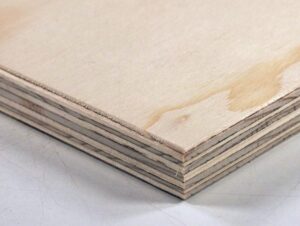
Plywood is a wood-based panel product(flat sheet of wood). These thin layer sheets are glued together. These layers are known as plies, and these all layers are bound in different directions like a cross-grain pattern. This makes the plywood stronger because each layer is perpendicular to the next layer.
The Ultimate Guide to a Layered Composition(The Structure of Plywood)
There are three main components that are helpful in making the structure of plywood. These are veneer layers, adhesive, and outer finish. Have a look at a guide to the layers and structure of plywood
Veneer Layers
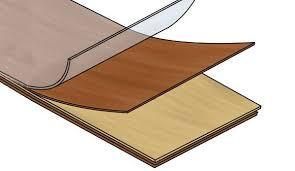
The main advantage of plywood is its structure of layers. Plywood is made by glued to multiple thin sheets of wood veneer. These can be between 3 and 13 layers, it depends on the thickness of the plywood. These veneer layers are bonded together with the grain of each layer oriented in different directions.
The Face ply is the topmost layer of plywood. This is also called the visible layer and is made with higher-quality wood, like maple, birch, or oak, it depends on the intended use. The appearance of this is smooth and attractive.
The back ply is the bottom-most layer and is usually made of lower grade because it is not visible to anyone. It doesn’t have the same appearance as face ply.
The core plies are between the face ply and back plies. This is made from wood veneers that are of lower grade material and thickness. These give plywood strength and stability. Core plies can be more or less it depends on the for what the plywood is made.
Cross-Grain Construction

It is also the crucial factor of plywood is the presentation of the veneer grains. Every layer of veneer is laid at a 90-degree angle to the adjacent layers. This cross-grain construction provides plywood with plenty of key advantages:
– This gives strength and stability. The different grain pattern prevents the plywood from warping, expanding, or contracting in response to changes in temperature.
– The perpendicular grain structure also enhances resistance to cracking and splitting along the edges.
Adhesive
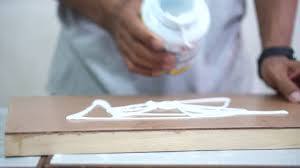
Adhesive is also called glue which plays an essential role in binding the layers of plywood. The quantity and choice of adhesive depends on the plywood. For example:
– Interior Plywood (non-water-resistant adhesive)- furniture and cabinetry, interior-grade plywood is used.
– Exterior Plywood (exposure to moisture without delaminating)- For outdoor applications, exterior-grade plywood uses a water-resistant adhesive.
Outer Finish
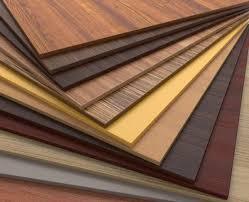
The outer finish gives the plywood aesthetic quality and protective properties. The outer finish includes:
-Sand is often used on the plywood to create a smooth surface. Sanding removes imperfections.
-Decorative plywood has an attractive veneer overlay on the surface, which can be made from exotic and hardwoods. It provides a more aesthetically pleasing finish, making the plywood suitable for high-end furniture and cabinetry.
– Protective Coatings are also important for the plywood. The exterior applications of plywood is often coated with a layer of varnish, lacquer, or another type of protective coating to improve the durability and resistance to moisture, UV light, and other environmental factors.
The advantages of plywood layered structure (Guide to The Layers and Structure of Plywood)
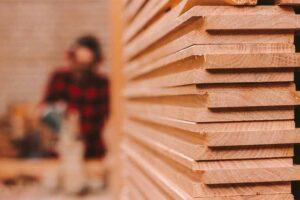
– Plywood layered makes it strong as well as resistant to warping, cracking, and twisting. In different situations like shelving and construction, it would be safe.
– Because of dimensional stability in the moisture changes and unpleasant weather it would remain stable.
– It is moisture resistant because of adhesive-bonded layers.
– It is easy to cut down the plywood in different shapes and sizes.
– Plywood can be easily made it does not require many resources and last longer.
– Plywood’s layered structure insulation against excessive heat and sound.
The Types of Plywood on Layer Construction
The plywood is used for various purposes at home, office, outside the building, near the sea, in the open area, and in aircraft as well. There are types of plywood on the layer construction some are listed below:
| Plywood Type | Description | Uses |
| Hardwood plywood | Maple, Oak, or Birch are used to make Hardwood plywood. | It uses for Cabinetry, furniture, paneling, and ornamental. |
| Structural plywood | Keep in mind the strength, load-bearing capacity, and stability while making this plywood. | It is for roofing, flooring, formwork, and bracing. |
| Softwood plywood | Structural plywood is made from softwood like pine, fir, or cedar. | It is used for Construction, furniture, cabinets, packaging |
| Marine plywood | It is constructed with sturdy wood species and waterproof adhesives. | For boats, docks, bathrooms, kitchen fittings, and outdoor furniture |
| Interior plywood | It is made with softwood and hardwood. | Furniture, shelves, cabinets, and wall paneling. |
| Flexible plywood | Use a flexible core to easy to bend in different shapes. | For making Curved furniture and architectural elements |
| Decorative plywood | For decorative purposes | Furniture surfaces and interior decoration. |
| Aircraft plywood | It is used in aircraft. Crafted to meet aviation standards | Lightweight structure, interior purposes |
Conclusion
The complete guide to the layers and structure of plywood is all about the strength, stability, and versatility of the plywood stem. It guides its carefully construction layers of veneer. Every layer is bonded together with a strong adhesive known as glue and combined in a cross-grain pattern. It contributes to the overall strength and effectiveness of the material. It’s advantages for which these plywood are preferred by people. At the last, the types of plywood on layer construction define where and which type of layer of plywood is used. This blog is a complete guide to the layers and structure of plywood for any person.



